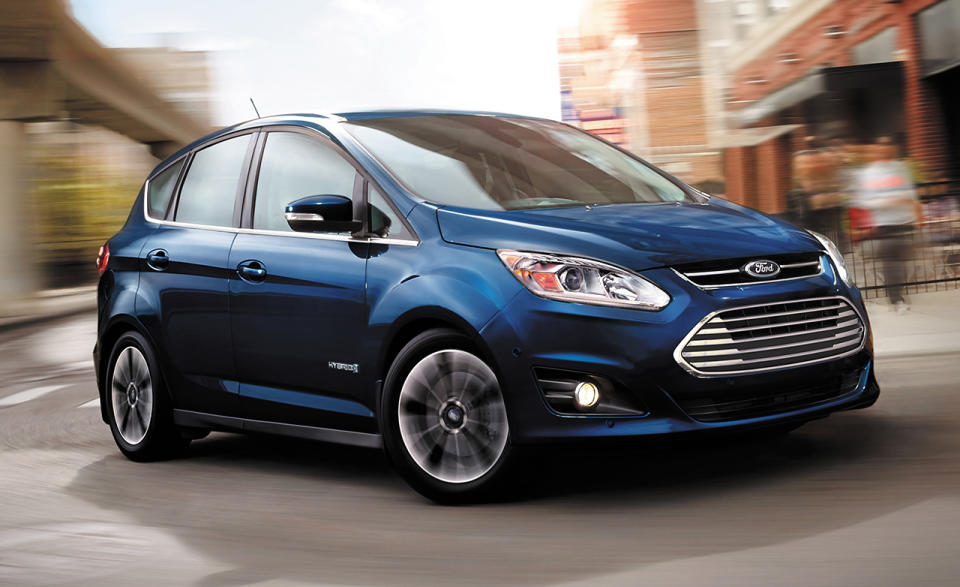2017 Ford C-Max / C-Max Energi: C the Differences

While Ford’s modest updates to the 2017 C-Max hybrid and C-Max Energi plug-in hybrid don’t pertain to the multipurpose vehicles’ powertrains, both models gain a revised appearance and a lower starting price, plus an expected boost in efficiency.
Surprisingly, the U.S. C-Max’s exterior updates deviate from those of the European model. If the European-spec C-Max underwent a full facelift, then the changes to our model are more like a shot of Botox. There’s a restyled grille, new wheels, and new headlights and taillights, all of which make for a tall hatchback that’s still not as handsome as the one Ford is selling across the pond.

Despite the fact that the C-Max continues to rely on the same 2.0-liter four-cylinder engine and an electric motor that’s fed by a 1.4-kWh battery pack, Ford predicts the 188-hp hybrid will see fuel economy rise from 41 mpg city and 36 mpg highway to 42/38 mpg. Meanwhile, the plug-in Energi, with its carryover 7.6-kWh pack, sees its efficiency get a bump from 95 to 104 MPGe in the city and from 81 to 87 MPGe on the highway. Although the EPA hasn’t released official figures for either 2017 C-Max model, we expect the Energi’s EV range to increase from 19 miles (2016) to 20.
Along with its new looks, the 2017 C-Max adds a Titanium model that effectively replaces last year’s SEL. The C-Max Energi, which previously came in a single trim level, is now available in either SE or Titanium as well.
Starting at $24,995, the 2017 C-Max’s sticker price is $50 lower than last year, and the 2017 C-Max Energi now starts at $27,995, or $4650 less than before, due to the addition of the lower-spec SE version. More impressive is the fact that the top-of-the-line 2017 C-Max Energi Titanium undercuts the 2016 Energi’s price by $1650. Additionally, all 2017 C-Max models come standard with a power driver’s seat and a backup camera, while a new blind-spot monitoring system is available on Titanium models.

 Yahoo Autos
Yahoo Autos 